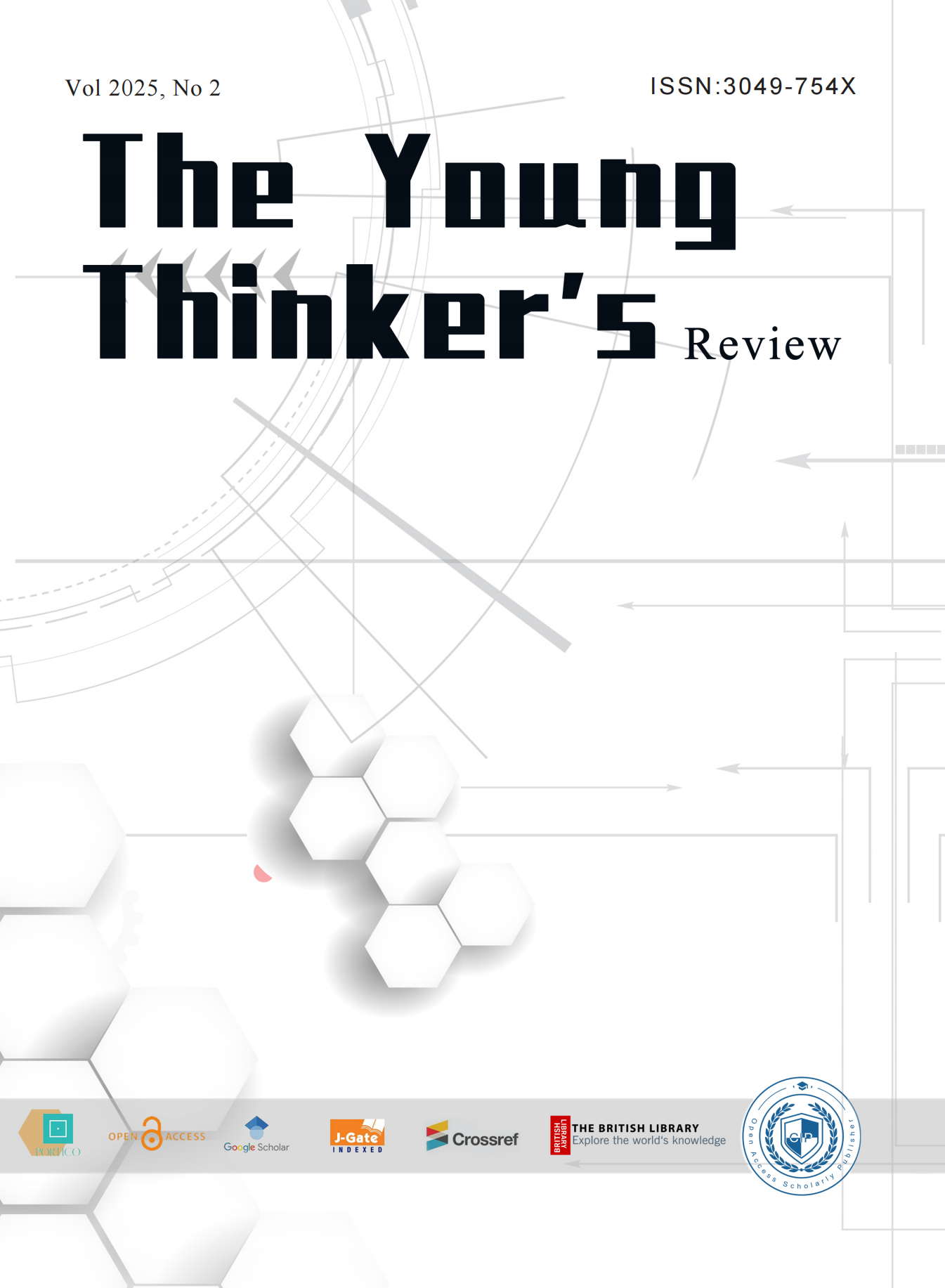Published 25-03-2025
Keywords
- Traffic Engineering,
- Behavior Analysis,
- Multiple Regression Model,
- Adolescents,
- Traffic Safety
Copyright (c) 2025 The Young Thinker's Review

This work is licensed under a Creative Commons Attribution-NonCommercial 4.0 International License.
How to Cite
Abstract
In order to enhance the traffic safety level of adolescents in Guangzhou and ensure their safety, this study investigates the factors influencing adolescent traffic safety behavior based on the safety survey data of adolescents in Guangzhou. Through quantitative analysis, four indicators most closely related to adolescent traffic safety behavior were selected (education, awareness, attitude, and personal factors). A survey questionnaire was designed and used to obtain scores for traffic safety education, awareness, and attitude. SPSS 19.0 was employed to conduct Pearson correlation analysis and multiple regression model analysis for empirical analysis. The results indicate that education, awareness, attitude, and personal factors can well explain the scores of adolescent traffic safety behavior. The significance level sig. for all variables is less than 0.05, which suggests that all variables have a significant impact and can be effectively applied in the evaluation of adolescent traffic safety behavior.
References
- ELVIK R. Assessing the validity of road safety evaluation studies by analysing causal chains[J]. Accident Analysis &. Prevention,2003,35(5):741-748.
- WANG Xiang, PAN Xiao Dong, CONG Hao Zhe, Children road traffic safety education effect evaluation based on multiple representations[C]. Management Science and Industrial Engineering (MSIE),2011 International Conference on. Har bin: IEEE,2011:89-92.
- VIET Hung K, HUYEN L T. Education influence in traffic safety: A case study in Vietnam [J]. IA TSS research,2011,34(2):87-93.
- [4]LI Shu Qing, LI Zhe. Construction of the traffic safety reliability models in Road Traffic System[C]. 11¹International Conference of Chinese Transportation Professionals (ICCTP). Nanjing: Southeast U- niversity,2011:2086-2091
- YAO Yu Hua, CHEN Dao Yong, ZHOU Feng. Traffic injury knowledge, attitude and behaviors of primary school students in Hong Kou district in shanghai[J]. Chinese Journal of School Health,2008(11):991- 992. (in Chinese)
- SHI Qi, WANG Xue Song, YANG Dong Yuan, et al. Analysis of traffic safety among middle school students and safety education improvements [J]. China Safety Science Journal,2011,21(12):143- 152. (in Chinese)
- WANG Wei, HUANG Ying, GAO Ning Bo. A road safety evaluation model based on fuzzy definition theory[J]. Journal of Transport Information and Safety,2013(5):87-92. (in Chinese)
- WANG Li, WANG Xue Song, YANG Dong Yuan. Precise education of pupils' traffic safety considering schools and grades differences[J]. Journal of Transport Information and Safety,2012,30(1):103-110. (in Chinese)
- LI Hai Qiong, QIN Ya qin, ZHAO Lin Lin, et al. Research on traffic safety behavior of children pedestrian in Kunming [J]. Chinese Journal of Ergonomics, 2012(1):45-49. (in Chinese)
- SONG Yang, WANG Xue Song. Research on improving traffic safety education for pupils and middle school students in China[J]. China Safety Science Journal,2013(2):153-159. (in Chinese)

